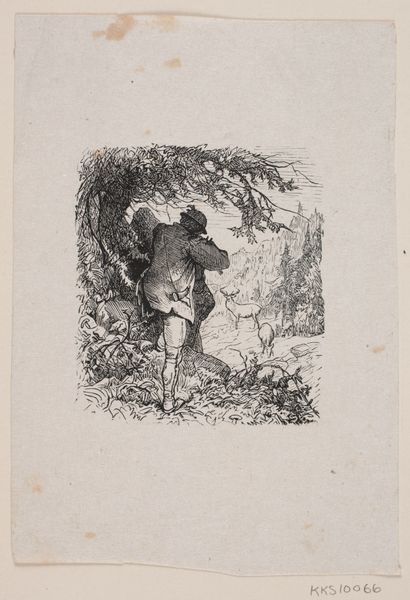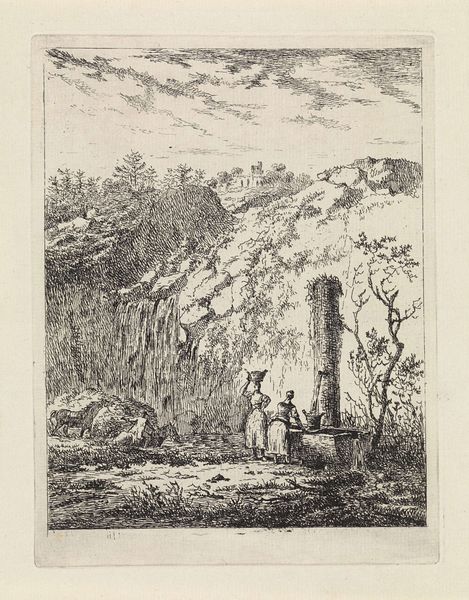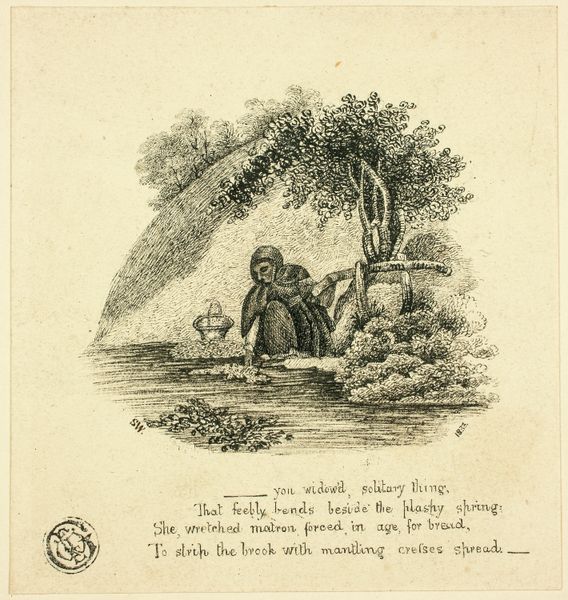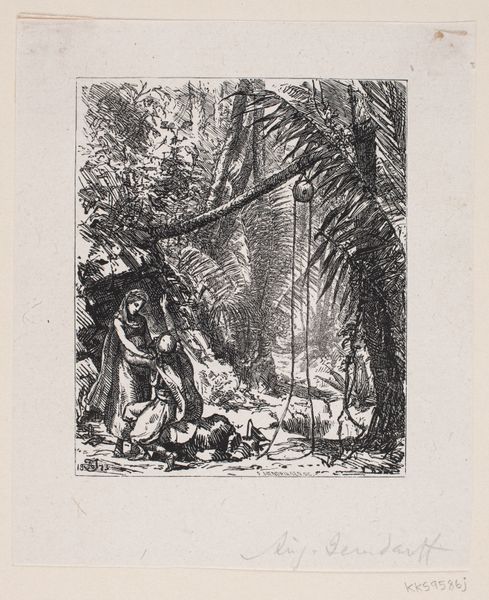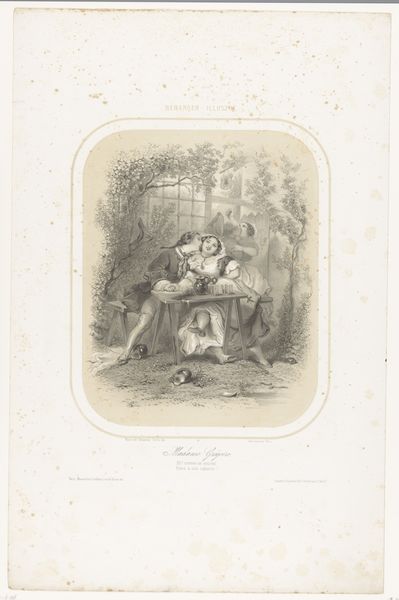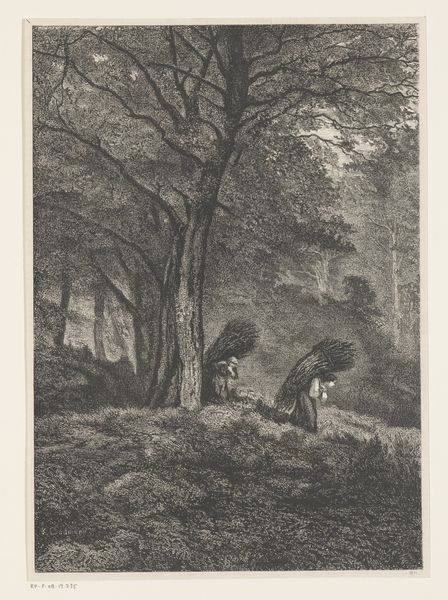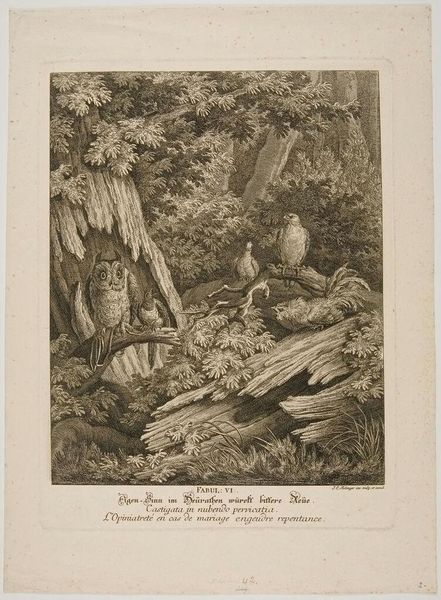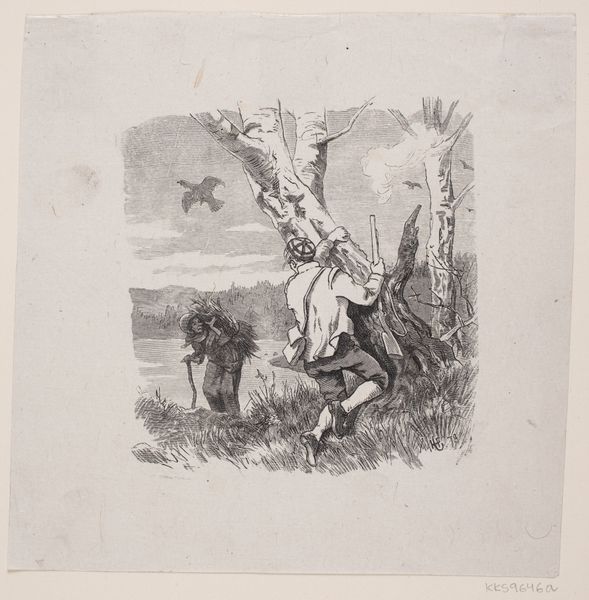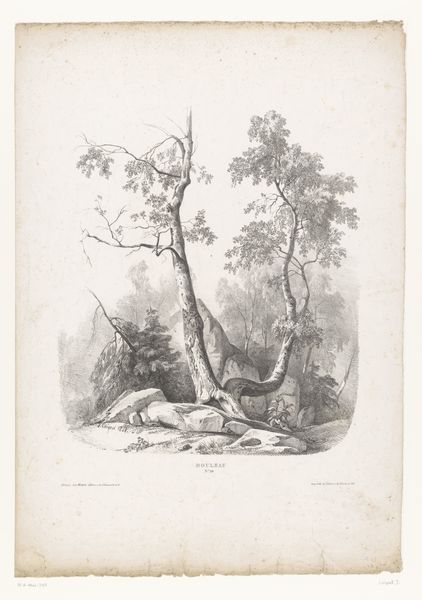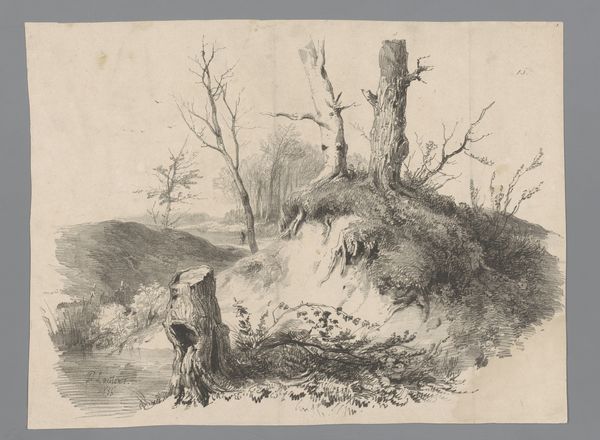
En bandit stående ved siden af en ung mand, han har myrdet 1854 - 1932
0:00
0:00
print, engraving
#
narrative-art
# print
#
landscape
#
figuration
#
genre-painting
#
history-painting
#
engraving
Dimensions: 173 mm (height) x 153 mm (width) (bladmaal)
Editor: So, this is "A Bandit Standing Beside a Young Man He Has Murdered," dating somewhere between 1854 and 1932. It's an engraving. It feels so dramatic and, well, obviously violent. How do you interpret this work? What story is it trying to tell us, and for whom? Curator: It's crucial to consider the context in which this print would have circulated. Popular prints like these often served as vehicles for social commentary and even moralizing tales. Who is this bandit, and what does he represent? Is he an outlaw acting against the law and thus a rebel to the elite, or an oppressor enacting violence on ordinary people? Is this meant as a criticism of power structures, perhaps highlighting social inequalities and their deadly consequences? Editor: That's a really interesting way to think about it – to wonder about the artist's potential political commentary. The bandit himself doesn’t look particularly wealthy, more like a rural commoner. Curator: Precisely! Consider also the period – this falls within an era marked by significant socio-political upheavals, class conflicts, and evolving ideas around national identity and justice. Prints such as this one often engaged with contemporary anxieties and could function as visual critiques accessible to a wide audience. Think about the impact of images, how a single image may reflect shared feeling of injustice at the time, while reifing stereotypical tropes. Editor: So it's not just a depiction of violence, but a potential commentary on power dynamics. Did the prints themselves play a role in activism or political movements? Curator: Absolutely. Cheap, mass-produced images, were crucial in disseminating political ideas, galvanizing public sentiment, and shaping collective identities. We need to analyze how these images contributed to, or challenged, existing social and political narratives. What do you make of the depiction of landscape, versus of people in the print? Editor: That’s something I hadn’t really considered. Thank you for framing it in such an insightful and politically engaged way! Curator: Art reveals a world of meaning if we pose the right questions and never take for granted the messages they convey.
Comments
No comments
Be the first to comment and join the conversation on the ultimate creative platform.
